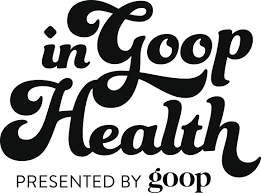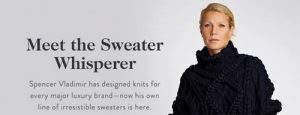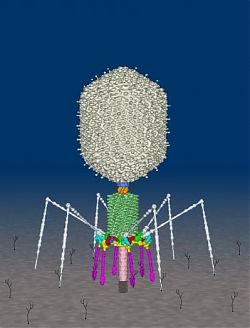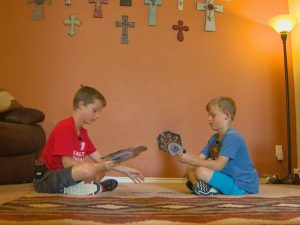It’s lazy to poke holes in the wellness industry.
 So here’s to fun and laziness.
So here’s to fun and laziness.
Dr. Kellogg has been an easy target for two centuries, other shamen and woman date back to antiquity, when who knew why anyone had explosive diahhrea, other than the ether or the gods.
Anyone who likes Coldplay enough to marry the singer has serious problems, and should not be dispensing advice for anyone.
Andrea Mandell of USA Today reports Goop, Gwyneth Paltrow’s lifestyle website, tested its first summit in the gluten-free city of Los Angeles last Saturday. The price was steep: Roughly 600 attendees paid anywhere from $500 (for a “Lapis” pass) to $1,500 (for a “Clear Quartz” pass) to experience all things Goop for over nine hours. From crystal therapy to organic bone broth sampling, here’s how our experience went down at Paltrow’s first conference.
8:45 a.m. This is technically the time I’m allowed into “Goop hall,” where I’ve been promised a long list of vendors showcasing goods for me to try. But I’m still at home, trying to figure out if the dress code will be more athleisure or free-spirited sundress. The first session doesn’t start until 10 a.m., so what’s the harm in arriving a tad late?
9:30 a.m. Huge mistake. After being given my entry pass for the day – a bracelet of brown worry beads with a blue tassel, signifying my lowest-tier status (Lapis), I enter Goop hall and it is immediately epic. There’s a woman giving crystal therapy readings seated on cushions, the line for aura photography (a thing!) is 25 people deep, the flavored oxygen bar is packed and Dyson blowouts are in full swing.
9:35 a.m. Mildly panicked, I quickly get to breakfast, sampling in quick succession: Bulletproof Coffee Plus (coffee blended with something called Brain Octane Oil, grass-fed Butter and pasture-raised collagen protein), a tiny pink glazed donut from Erin McKenna’s Bakery and a sushi-inspired breakfast lox burrito from Kye’s.
9:40 a.m. I spot Gwyneth Paltrow walking in and hugging her staff as she takes in the peak Goopdom. (She wore a pink sundress, and I feel vindicated, but in truth anything went, as the dress code varied from athleisure to jeans.) The crowd here is mostly female, white, and between the ages of 30-50.
10 a.m. We assemble into the “chat room,” a forum style hall in which Blythe Danner’s pre-recorded voice welcomes us over the PA. Paltrow takes the blush-tone stage to greet us and explains how she became interested in this space in 1999, after her father was diagnosed with throat cancer. “I was trying to get him to eat healthier and I made him this batch of zucchini bread that was everything-free and I thought it was delicious,” she says. “And he bit into it and went, ‘Well, it’s like biting into The New York Times’.” As the audience chuckles, she says luckily gluten-free sugar-free food “has made a lot of progress since the ’90s.”
10:15 a.m.. Paltrow introduces us to the “the guy responsible for the term conscious uncoupling,” Dr. Habib Sadeghi, who will be instructing us on something called Cosmic Flow. But it’s a rough start: Sadeghi’s hour-long session proves to be a puzzling, extemporaneous jumble of his battle with testicular cancer, “the ontological experience called your life,” queries on why water is wet and how birds know how to fly (my 8-year-old could deliver this talk; get out there and earn your keep). He reads thank you notes from his patients and holds an existential discussion on how we chew our lunch. “I am one of the most authentic beings you will ever meet!” says Sadeghi, which immediately makes me question whether he is authentic. “Because I will never sell you short.” Somewhat deflated, I await the next session on gut health.
 I’ve always told my daughters, when someone says “trust me,” run away.
I’ve always told my daughters, when someone says “trust me,” run away.
11:35 a.m. Dr. Alejandro Junger (known for his Paltrow-approved master cleanses) takes the stage with Dr. Steven Gundry and Dr. Amy Myers. I know nothing about gut health, so I’m here for this: Teach me about my gut! But the first 10 minutes meander so much I get antsy and sneak out to try more of the samplings in Goop hall. There goes my gut.
11:45 a.m. Living the high life, I try Belcampo’s organic bone broth (unsalted, it’s hospital-like, but becomes more appetizing once you stir in offered mix-ins like apple cider vinegar and honey), before moving onto Moon Juice’s Blue Tonic with Brain Dust. There’s also a progressive display of pre-filled vape pens from hmbldt and an area called The Pharmacy, where you can buy Paltrow’s pre-packaged vitamins ($90).
12:05 p.m. Scooting back into gut health, it seems I’ve missed Gundry advising the audience to go hungry: “Don’t eat. I can’t stress that enough. We have the ability to store fat,” he instructed, according to my colleague at the Los Angeles Times.
12:15 p.m. Break! Though all of the activities available in the courtyard booked up for the day by 10 a.m. (an annoyance to many who paid hundreds if not thousands to be here) I luck out and get my aura photographed (a purple-y red, as it turns out, signifying I’m both a “visionary” and “passionate”). I sample “kale cookies ‘n cream” vegan ice cream. (Pass.) Two women I run into from Kansas City have told me they’re not super into the panels so far, and might try a nearby hike.
12:35 p.m. Onto a psychotherapy panel called The Tools! Paltrow moderates this one herself, and the session features her go-to doctors, Dr. Phil Stutz and Barry Michels. Initially, I’m worried they’re going to espouse more why-do-birds-fly generalities, but suddenly a red-headed woman volunteers to go up on stage for a session of LIVE THERAPY. (Paltrow gives up her seat and sits cross-legged on the floor.) It’s a remarkably raw, honest 30 minutes and closes with a talk about positive entitlement. “60 to 80 percent of the women in my practice don’t feel that basic sense of entitlement, that ‘I deserve this,’ ” says Michels. At their prompting, the room of women shout, “I’m an animal!” The hour ends with Paltrow opening up about her struggle with perfectionism. The doctors coin our fear The Shadow. “It’s whatever you wish you weren’t,” says Michels, no matter how much success you have.
1:15 pm Lunch is a yogi’s dream: Kale salads from Sweetgreen, poke bowls from Sweetfin, the matcha bar in full swing. Paltrow is off in an enclosed garden space having a catered meal with those who shelled out $1,500. This is not me, but I’m cool, I get to watch people willingly submit themselves to electrolyte IV drips in the courtyard.
 3:45 p.m. The sex panel! Just when I thought I couldn’t take any more advice, renowned relationship expert Esther Perel (whose podcast I will now subscribe to), takes the stage with Girls showrunner Jenni Konner and “orgasmic genius” Nicole Daedone. Konner explains she and Lena Dunham depicted mostly bad sex on Girls because “we showed what sex is like in your twenties.” Perel disputes the common belief that women have lower libidos than men. “I don’t think women don’t want sex, I think women don’t want the sex they have,” she says. The session gets the biggest applause of the day.
3:45 p.m. The sex panel! Just when I thought I couldn’t take any more advice, renowned relationship expert Esther Perel (whose podcast I will now subscribe to), takes the stage with Girls showrunner Jenni Konner and “orgasmic genius” Nicole Daedone. Konner explains she and Lena Dunham depicted mostly bad sex on Girls because “we showed what sex is like in your twenties.” Perel disputes the common belief that women have lower libidos than men. “I don’t think women don’t want sex, I think women don’t want the sex they have,” she says. The session gets the biggest applause of the day.
5:05 p.m. Cute servers circle the chat room with trays of refreshing fruit smoothies. I’m starting to think Paltrow is a genius.
5:15 p.m. After a brief Q&A with Tracy Anderson, we’re onto the celebrity-packed keynote panel called Balls in the Air, which features Cameron Diaz, Tory Burch, Nicole Richie and Miranda Kerr, with Paltrow moderating. The convo is focused not on how these successful, beautiful women do it all, but how they choose what not to do. Diaz reveals why she hasn’t made a movie in over three years.
After being on the road continuously for her film career, “I just went, ‘I can’t really say who I am, to myself. Which is a hard thing to face up to,” says the actress, who married Benji Madden in 2015. “I can’t do the same things I’ve been doing for two decades…if I want to have a full life.” Richie’s tip on how she stays sane? “I like to wake up an hour before my kids, just so I can be alone.” The session ends on a classically Goop note, with Kerr revealing she once tried leech facials, and brought the leeches home because they kill them otherwise. “They’re in my koi pod,” she says.














